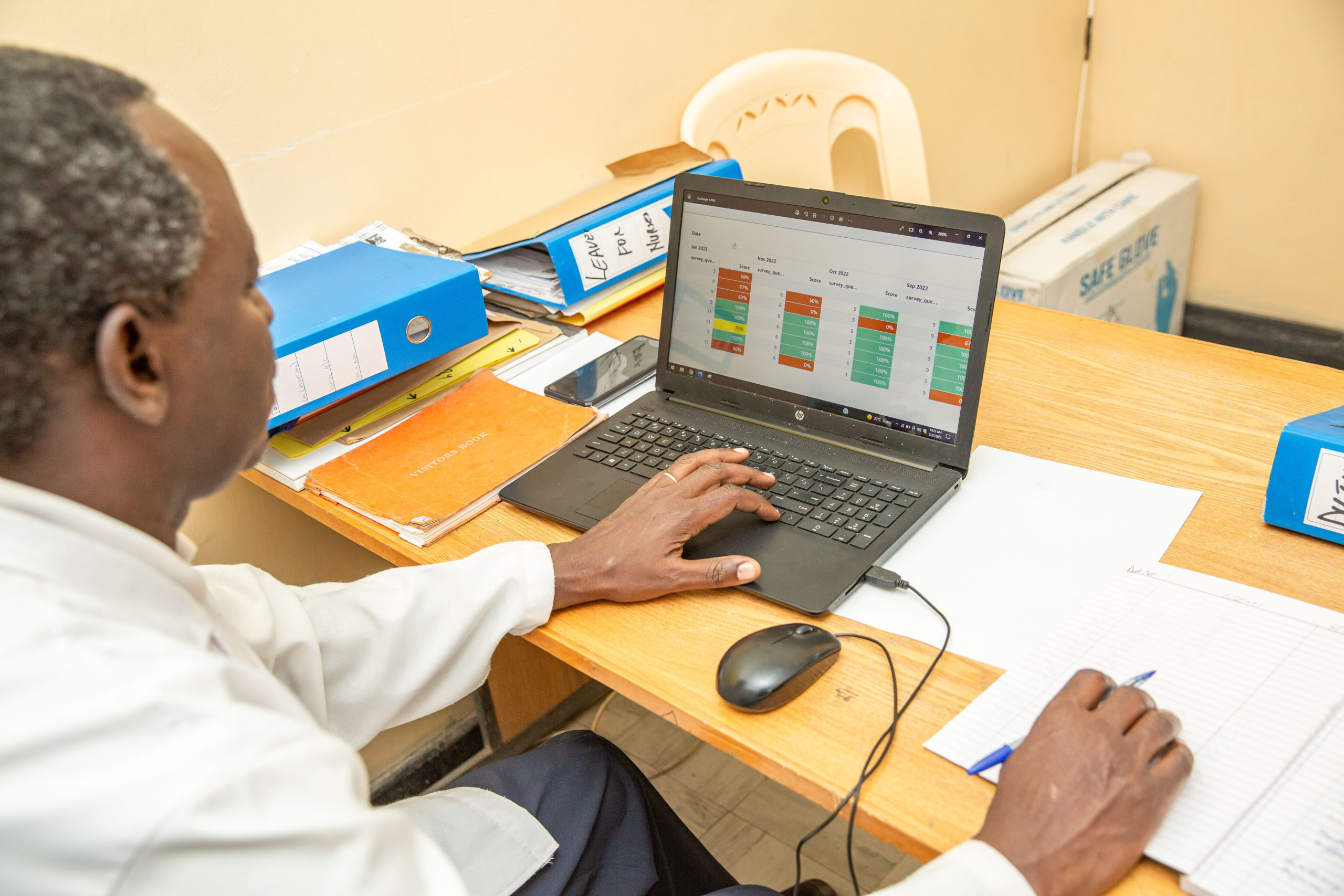‘One of the challenges we’ve often found as nurses and administrators is that we don’t have a broader view of how our clients experience care at the hospital, beyond what they tell us in person. It means we sometimes aren’t aware of clients waiting longer than needed for care, or if they have been treated poorly’. – Christine, Head Nurse, Lanet Health Center, Nakuru County
In Kenya, we know that health system stakeholders – including obstetric nurses, midwives, and health system managers – need better, real time indicators for quality of maternal care, and simple cost-effective ways to track patient experience and satisfaction. We also know that few formal mechanisms currently exist for women to have a say on their experiences of care at facilities beyond ‘exit interviews’, which are expensive, un-anonymized, and difficult to track and scale effectively. Unfortunately, this means that factors perpetuating poor quality of care in facilities can go unnoticed and therefore unaddressed.
How does a simple text messaging platform solicit feedback on health systems from mothers?
Amplifying women’s voices is a critical part of sustained quality improvement in facilities. Our AI-enabled digital health tool PROMPTS offers a solution; helping join the dots between patient, provider, and health decision-makers.
- Each month, a mum using PROMPTS receives a ‘client-experience’ survey, prompting them to give feedback on the quality of care they received in the facility. They answer questions like ‘were you treated with respect’ and ‘how many of the following clinical checks did you receive?’.
- The resulting data is rapidly aggregated into ‘scorecards’ and shared with facilities, giving providers and their managers in Kenya visibility into what’s happening on the ground in a way that hasn’t before been possible at this scale and cost.
- Over 300,000 women have already provided feedback through PROMPTS, resulting in tangible changes at the facility–level. For example, privacy curtains were installed in one of Kiambu Counties biggest hospitals after consistent scorecard feedback indicated mothers prioritized this.
The relevance of the phrase ‘actionable data’ has, over the years, been diluted by its liberal application to any data sharing with policy or decision-makers. While the benefits of data sharing for cooperation, efficiency, and impact of programs in public health are widely recognized, organizations everywhere face motivational and technical barriers to sharing it.
Three things we’ve learnt along the way
We wanted to document some of the lessons we’ve learned during the process of data-sharing, in hopes that other organizations
- Understanding how our government partners prefer to receive data helps make it actionable. We initially developed sophisticated data dashboards and visualizations to share with our government partners. However, after conducting follow up interviews, we realized that end users actually prefer narrative formats. So we iterated to sharing simple monthly summaries with counties that offer a paragraph on performance, percentages on respectful care, and a list of frequently-reported issues contributing to poor quality of care for mums (such as hygiene and privacy issues, or long wait times at facilities).

An example of a recent quality of care scorecard, rating facilities by respectful care and quality. - Co-designing information tools creates accountability and ownership. Jacaranda works with information users to co-design dashboards that are usable, useful and, importantly, help counties track and advance progress on specific health priorities such as improving blood availability. Our blood tracker was developed to help lab managers and providers identify sources of blood quickly, without wasting precious minutes making multiple phone calls. The dashboard has gone through multiple design iterations based on the feedback from lab managers, as they engage and use the tool. For example, Lab managers really wanted some form of inventory detail (including expiry dates) so we created a ‘light touch’ version of a calculator on the dashboard. We continue to conduct follow up sessions to make tweaks to the way information is presented and digested based on the feedback from end-users.

A screenshot of the blood tracker for Migori County, showing expiry dates of specific types of blood. - Continuous follow-up helps link citizen-driven demand to outcome. We have teams in the field who maintain relationships with facilities, sub-county and county teams to ensure stakeholders can interrogate the data we send them. Through routine monthly reporting, they are also becoming better sensitized to data, and how to read and respond to it. We also realize that to fully close the feedback loop, we need to let mothers know how their feedback was acted upon – this is a design exercise that we’re currently engaged in. We hope through this dual approach, we can not only increase the accountability of health system managers to improve case quality, but also empower women navigating the health system – giving them renewed confidence in improved facilities and trust in digital channels that translate their feedback into outcomes.
Going forward, we are eager to work with, and hear from partners on strengthening approaches to making data truly actionable at both facility and county level, ensuring it is treated as evidence, built into practice and, ultimately, endorsed at a national level.

